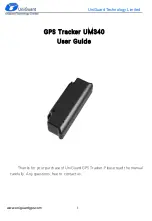
42
English
Initialization Methods
Three possible methods, from fastest to slowest:
•
Known
: Initialization on Known point.
•
Bar
: On Initializer Bar Installed at the Base
•
<None>
: On The Fly (OTF) Initialization
1.
You need to specify the Site ID of the known point (surveyed in a previ-
ous job or downloaded from office software).
2
GNSS antenna held stationary over known point for about 15 seconds
3.
Countdown indicates when initialization is achieved.
1.
You freely enter a Site ID for the rover’s start point
2.
GNSS antenna held stationary on the initializer bar for about 5 minutes.
3.
Countdown indicates when initialization is achieved.
4.
Move the antenna from the bar to the range pole taking care not to
mask the antenna while doing this. Then start your job
1.
You freely enter a Site ID for the rover’s start point
2.
There is no countdown indicating when initialization is achieved.
The initialization phase is
required to ensure that
your kinematic surveys,
whether continuous or Stop
& Go, will reach centime-
ter-level accuracies through
post-processing.
With the “Known” method,
you can make a survey at a
fairly long distance from
the base.
Initialization achieved
in 15 seconds
Init point can be several kilo-
meters away from the base.
Init point is a known
point
Rover
Base
Known Point
This vector is ac
curately known
Conversely, with the “Bar”
method (the method we
recommend), your survey
will necessarily start from
the base and obviously the
points to be surveyed
should not be too far away
from the base.
Initialization
achieved
in 5 minutes
Init point is 20 cm
off the base loca-
tion.
Base
Known Point
1
2
Initializing...
Move antenna to range pole
once countdown complete.
Rover
With the “<None>”
method, the survey start
point can be any point but
you should have a rough
idea of the distance from
your working area to the
base so you can estimate
the overall time you should
spend collecting data (15
to 30 minutes typical)
No initialization point
Rover’s start point is
an unknown point
Rover
Base
Known Point
D
















































